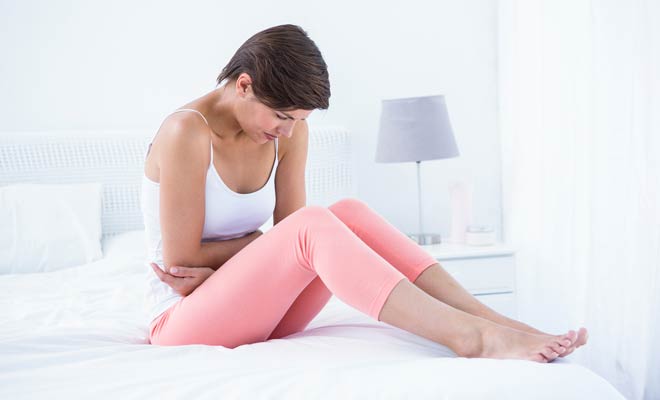You know you haven’t had your period for months, and it’s likely you’re officially in menopause?
So, why are you having menstrual cramps now?
Menstrual Cramps after Menopause? Is it Possible?
Menstrual cramps after menopause[1] can mean many things.
It can signify the presence of any of the following conditions:
1. You have not quite crossed over to menopause.
If your period has stopped but has not yet stopped for a full year, it’s likely that your menstrual cramps[2] are signifying that you will be having your menstruation in a few days.
2. You may have developed Endometriosis.
It is a condition where tissue that should have grown in the uterus has found its way to your ovaries or some other part of your reproductive system.

Understanding Menstrual Cycle – Image/Shutterstock
3. It’s possible your uterine fibroids are causing it.
Most women get fibroids prior to menopause.
Sometimes, these swell become painful and may even cause bleeding.
Sexual intercourse may cause pain and bleeding.
4. Cysts in your ovaries and uterine lining[3] may be causing it.
These may be early signs of cancer.
5. It may not have anything to do with your reproductive organs.
Stomach infections, even food poisoning can cause menstrual cramp-like symptoms to develop.
What can you do to Ease the Pain?

Hot Water Bag Therapy – Image/Shutterstock
If the pain is unbearable, the best thing that you can do is to consult with your physician.
However, if the pain is minimal and you have reason to believe that you may still get your menstruation, treat the pain just like you would a menstrual cramp.
Try any of the pain away solutions below:
- Use a Hot Compress to Relieve Pain in your Abdomen.
- Take something hot. It may be just gas that needs to be let out.
- Take a cup or two of tea until you are relieved through a burp or flatulence.
- Use topical muscle relief ointments or patches and put these on your abs.
- The heating and cooling sensation these products leave can also ease your abdominal pain.
- Try walking around. It will help shake off any tangled nerves or pressed tissue that may be causing the pain.
- Perhaps all you need is a little bit of exercise.
If you are way past menopause, however, there may be something else causing your pain.
To refrain from scaring yourself, leave the diagnosis to your doctor and do as your physician prescribes – take additional lab tests.
If you must, rule out certain conditions and take any prescribed medicine exactly as you are directed.
FAQ’s:
Que: What can cause cramps after menopause?
Ans: Many people experience pelvic cramps as part of their menstrual period. But cramping may still occur after menopause and can sometimes be a sign of an underlying condition, such as uterine fibroids, endometriosis, constipation, or ovarian or uterine cancers.
Que: Can menopause cause abdominal and lower back pain?
Ans: It can cause lower tummy and pelvic pain during the perimenopause and afterwards.
Que: Can hormonal imbalance cause lower back pain?
Ans: Typical changes in a woman’s lifecycle, including pregnancy, childbirth, hormonal imbalances, weight gain (especially in the abdomen) can trigger a back pain.
Conclusion
All sorts of body conditions manifest with age which is normal given the general deterioration of what once were normally functioning body processes.
As you grow older, you will become more and more vulnerable to developing diseases.
The best you can do is to stay healthy and well.
Practice healthy living and be able to enjoy your life longer.
Like this post? There’s more. Get tons of beauty tips, tutorials, and news on the thebeautyinsiders Facebook & Twitter page. Like us on Facebook – we’ll see you there!
 By Wendy Gould
By Wendy Gould





